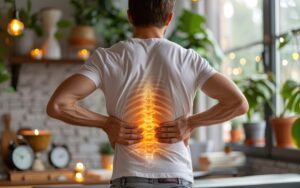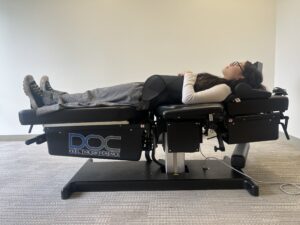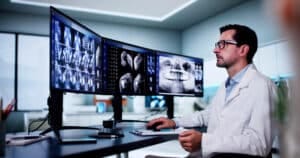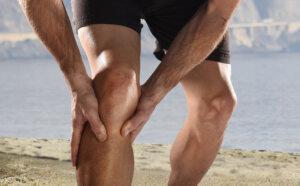Spinal – refers to the spine;
Stenosis – medical term used to describe narrowing of any opening
What Is Spinal Stenosis?
Spinal stenosis (sometimes called spinal narrowing) is a common condition and cause for neck and back pain, especially among elders. It is a form of degenerative changes in the spine, manifested as narrowing of the spinal canal that puts pressure on the spinal cord and nerve roots. The condition is most common in both men and women over 50 years old.
This narrowing can occur in any part of the spine, but it is most common in lower back and neck, and very rare in the thoracic part of the spine.
Spinal stenosis symptoms depend on the affected area of the spine and whether the spinal cord, nerve roots or both are compressed. Most common symptoms are walking or standing with
Causes of Spinal Stenosis
In some cases spinal stenosis is congenital, that means that people are born with smaller and narrowed spine. But in most
Although age is a very important factor, not everyone will get spinal stenosis during the years. Other factors that increase the risk of developing spinal stenosis include osteoarthritis, inflammatory spondyloarthritis, Paget’s disease, spinal tumors, spinal injury or surgery, female sex, etc.
Spinal Stenosis Symptoms
Not all patients diagnosed with spinal stenosis develop symptoms. Symptoms occur when narrowing starts to put pressure on the spinal cord or nerve roots. They often start gradually and worsen over time.
Symptoms vary depending on the location of the stenosis and whether spinal cord or nerve roots are affected.
Spinal Stenosis Lumbar – is manifested with pain in the lower back and legs.
Spinal Stenosis Cervical – is manifested with pain in the neck and arms.
Aside from pain, other symptoms include numbness and tingling sensation, muscle weakness and cramping in arms and hands or legs and
Diagnosis of Spinal Stenosis
The doctor will ask and examine you for symptoms caused by spine narrowing. In order to confirm the diagnosis and to determine the severity of condition imaging tests and EMG (electromyography) have to be done. Imaging tests include X-ray, MRI and CT or CT myelogram.
EMG is performed to check the function of nerves and muscles in arms and legs. And blood tests may be done to check or rule out other conditions.
Spinal Stenosis Treatment
It is important to understand that there is no cure for spinal stenosis, but many treatment options can help to cope with the symptoms.
Treatment depends on the location of the stenosis and severity of the symptoms. Treatment options include corrective exercises, physical therapy, medications, alternative therapy, and spinal stenosis surgery.
Other helpful resources you’ll want to check out:
Exercises and physical therapy
Regular exercise and physical therapy are an important part of spinal stenosis treatment. They help to build and maintain muscle strength which results in improving the balance and ability to walk and move, as well as controlling the pain. Swimming, biking and brisk-walking are examples of how to stay active when coping with spinal stenosis.
Medications
Over-the-counter pain killers, such as acetaminophen and NSAIDs, such as ibuprophen and naproxen can relieve mild pain. For more severe and chronic pain anti-depressants and opioids may be useful.
Steroid injections
Injecting corticosteroids around the impingement will reduce the inflammation and provide temporary relief of the pain. It is important to notice that steroid injections won’t work for everyone, and even when they work, repeated injections can weaken nearby structures, so their use is limited to only a few times a year.
Spinal Stenosis Surgery
There are few surgical procedures that can be performed in patients with severe or worsening symptoms; these include laminectomy, laminotomy, laminoplasty and
Alternative Treatments For Spinal Stenosis
Alternative treatments such as chiropractic care, acupuncture
Applying hot and cold pads on the spine and maintaining healthy weight can also relieve some of the symptoms of spinal stenosis. To get to the root cause of pain and discomfort, schedule an initial consultation, including a comprehensive evaluation and first treatment.



